How to slay dialogues/monologues
Give a voice to your character
Imagine walking on the street, and asking for directions. Ask 5 or 10 different people, and you will get a different answer every time, maybe not in terms of reply content, but in a way, it’s told.
Even the “I don’t know,” answers will probably be different, even in a bit,
“Sorry, dunno.”
“No idea, man.”
“Get a map, moron.”
So the question is how does your character talk? Your speech is affected by various things:
- Your location - maybe your character is originally from France? Or the UK? Or some other part of your country, or state, where some kind of accent is used.
I have a couple of characters in my story that came from other countries, or culture. To recreate their accent, I just look on the Internet about their speech specifics, some catchphrases, words etc.
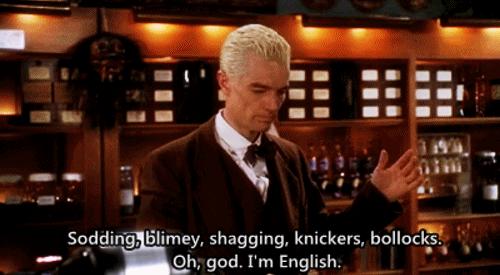
- Educational level - now, here I don’t mean just what kind of education your character has. Your character might’ve read a lot of books all his/her life, and this affects your speech maturity a lot. So think about it - what kind of education your character has, was he/she a bright student (cause the fact you finished uni, doesn’t mean your speech is well rounded), does he/she read books, or maybe watch Kardashians?
- Age - like, is your character, like, a total teenager, or maybe a senior, who’s using a lot of anachronism words.
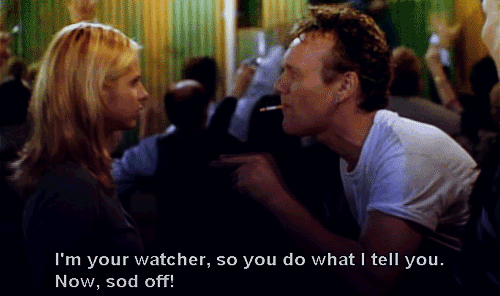
- Personality - is your character nervous, cold, flirty or simply rude?
- Your character’s relationship with the person she’s speaking with
No one speaks to their boss as they speak to their husband or wife etc. - Your character’s attitude toward the conversation topic . Maybe he/she is very passionate about the subject Like @NelidaU about Texas, or maybe they don’t want to talk about the subject at all and will try to tune it down.
- Mood - maybe your character is pissed, or tired or very happy.
All these things simultaneously affect your speech, so always think about them and analyze before writing dialogues.
Seems like a lot to take into account? There are certain ways to make it less complicated:
- First of all get in the habit of listening to how people talk . Just take a look around and take notes on how everyone’s way of speaking is different. This might give you some ideas on how to make your own characters speak.
- Get to know your characters well. And here we go again to the fact that you NEED to write character questionnaires.
- Once you have a clear vision of your characters - play out their conversations in your head. This is a kind of practice. Just put your characters in some kind of situation in your head and play the dialogue.
- Clean it up. Good dialogue is not always the same as the way people really speak. Repeat that a couple of times and change if necessary.
How to not bore your character with dialogues
Now some things I noticed in reviewed stories, that make a bad dialogue.
-
A lot of unnecessary details
In real life, we talk about a lot of unnecessary crap, but we are more invested since it is our life. It works much more different in stories, and especially in Episode stories. If your dialogue doesn’t contain important information or something that shows the essence of the character - you don’t need it.
Dialogue shouldn’t be just for the sake of dialogue itself. It must show character personality, attitude towards others. -
Amy Schumer syndrome
At least that’s how I call it. When authors try to make their dialogues funny and witty and forget that they’re writing a story, not a stand-up monologue. It’s fine to put a couple of jokes into dialogue, but when you make a complete dialogue made from jokes and “witty” comebacks only - it’s just doesn’t work. And it’s a legit thing, I’ve seen it in a way too many stories. -
Superficial dialogues
By this, I mean dialogues, that seem to have zero personalization in them. Characters just say very common phrases, that doesn’t show any character trait.
For example, you can answer differently on a question “Do you like tea?”
“No, I don’t.” or “I’m indifferent to tea really, though I sometimes have it to be sociable.”
It’s fine to keep short occasionally, but when it’s too often, or even always - the whole story gets kinda dull and boring. Little details matter.

-
Cut dialogue in the right moment
Now let’s check this example. How we tend to have dialogues in real life:
SHE: “Um, my car broke down and I left it on my work’s parking lot.”
HE: “I’ll take care of it.”
SHE: “You will? Great.”
HE: “Yeah, well, I’ll try.”
SHE: “Okay, great, thanks a lot. Appreciate it.”
HE: “Anyway, I should get back to making dinner.”
SHE: “Okay, then, talk to you later. And thanks again for the help.”
HE: “That’s nothing. All right. Got to go.”
SHE: “See you.”
HE: “Right, on Saturday.”
SHE: “That’s right. We’ll be there at six.”
HE: “Okay, see you then.”
If you do it this way, the reader is likely to stop reading, if he’s still awake. Learn to cut short, while grabbing the essence of dialogue.
When to write dialogue/monologue and when to sum it up?
It makes sense to write dialogues/monologues in case you want:
- To let the reader hear your character’s thoughts - basically, monologue.
I feel like this thing is kinda abused in many Episode stories, and used a lot by some lazy authors, that prefer to write a 200-word essay instead of building a scene/flashback/memory using visuals. No need to show every possible thought. Write ones that show us character’s personality, or maybe a sense of humor on some occasions. - When a conversation is a key event in the story . Basically, if your characters are chatting about the weather while they’re sitting in the cafe, that might just be background. But if your story’s about a teenager pregnant by bad boy vampire gang leader, the conversation where the guy proposes marriage/abort is probably a critical event that will change the direction of the story and must be present.
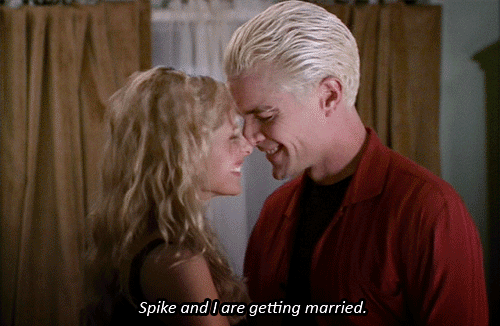
- As background, to set a scene - in tiny quantities. These dialogues might be a preparation for a more important part of the dialogue. Or. They could lack in the subject while showing important emotions. Like ex-lovers meeting for the first time in 5 years, and being really awkward and having a meaningless convo.
In other cases, it is best to just sum it up with narration.
What NOT to do in dialogues.
- Information stuffing
“Hey, is that your mother friend’s cousin Peter, who dropped out of college to become a porn movie director, causing your father to have a stroke and diabetes?” - Excessive babbling
“Like, I was, you know. Like. Right. Okay, well. Um. What’s that? Right. Anyway.”
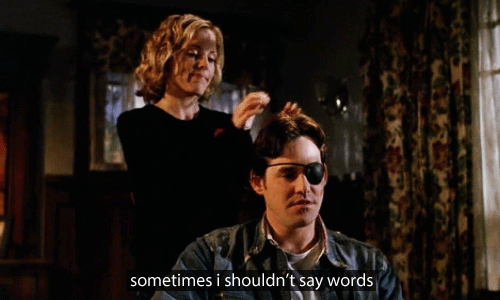
- Putting YOUR words in your character’s mouth
“My mom called me a hoe because I have a sugar daddy, which made me cry because I’m an independent woman and still the victim of gender stereotypes.”
Hope you don’t need any explanation why these approaches suck but feel free to ask.
Summary
- Give each of your characters a different way of speaking
Play out possible dialogues taking into account your character personality as part of the practice. - Know when to use dialogue
If it’s an important conversation, your readers will want to read it for themselves. - Know when to cut it
If a character talks for an hour about how his phone broke down, you can’t include the whole speech in your story. Instead, you can summarize it really short, without boring your reader. - Feel free to mix dialogue and summary
You can mix a few lines of monologue into a conversation to give readers the insight into your character’s thoughts. Just don’t put too many monologue lines, and make sure visuals stay at least a tiny bit dynamic, not just 2 characters standing in idle animations.
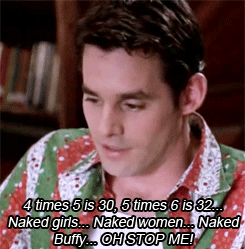
- Use animations .
Often, people don’t express what’s on their mind directly. Instead, they hint at it in other ways. If a guy is attracted to some girl, he might not come out and say to her, “I like you” Instead, he might become shy and awkward around her. The best dialogue often has two levels, what characters are saying on the surface, and what they really mean. - Use pauses
Pauses in a conversation can be as expressive as what is said out loud. You don’t talk non-stop yourself. We think about what other people say, before saying something (mostly). During a pause, you can show the characters’ body language (aka animation) or what’s happening around them. - Trim the unnecessary
Real-life conversation contains a lot of polite filler, false starts, and repetition. If you include all of this in your written dialogue, it can get boring. Instead, you can include just enough to give the realistic dialogue, then cut the rest. - Don’t pile on distracting dialogue tags
Dialogue tags such as, “he whined,” “she commanded,” or “he queried”. This is not a book or Wattpad story. It’s Episode. We have animations for this stuff. And yes, I totally saw it being used in some stories.
![]() NelidaU:
NelidaU:
Dialogue is special, because it doesn’t have to be written perfectly all the time. As people don’t always speak perfectly in their language, they interject, they speak in fragments, DON’T BE too obsessed about making sure the dialogue is perfect English because it feels less natural sometimes.
For an example, “Time to make breakfast,” is technically a fragment, but totally normal for someone to say right? It is missing a verb, though. In perfect English, this should be, “It is time to make breakfast.” Depending on the character, they might always talk in perfect English like this, so it really also comes down to the fact that YOU HAVE TO KNOW THE CHARACTER YOU’RE WRITING FOR!
In order to help you figure out if your dialogue is good, a good thing to do (albeit maybe embarrassing sometimes LOL), say the dialogue out loud and see how it sounds to you. If it don’t sound right, make it right.
![]() NelidaU:
NelidaU:
However, if you are a’narratin’, you better watch ya dang grammar! >.>